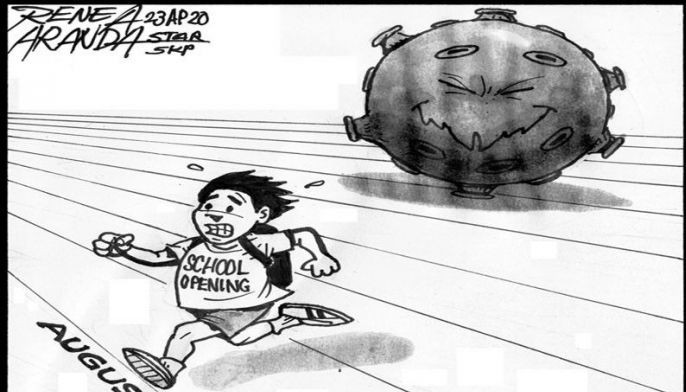Classes were among the first to be disrupted by the coronavirus disease 2019 pandemic. As in the difficult balancing act between public health and economic health, stakeholders are struggling to balance the need between protecting people from a contagion and resuming formal education.
The COVID-19 pandemic struck as public schools were entering the final weeks of the schoolyear. Graduation proceedings remain in limbo; authorities have yet to decide whether there will be a universal promotion of all students to the next level, or whether a remedial period for the missed lessons will be required before students can move up to the next grade.
At this point, a regular school opening in June appears to be out of the question. With the country increasing capabilities in COVID testing, contact tracing, isolation and quarantine, however, stakeholders are tossing around the possibility of starting the next schoolyear in August.
Health experts are likely to caution against any haste in reopening schools. While children are not considered at high risk for COVID infection, they are not immune to the disease: children as young as a few weeks old, toddlers and teenagers have succumbed to the coronavirus.
As education stakeholders weigh their options, authorities can boost efforts to promote online learning. Amid the enhanced community quarantine, the Department of Education has launched on online platform called DepEd Commons, which allows distance learning through digital technology.
DepEd Commons offers online review materials and open educational resources prepared by teachers who are experts in particular subjects. DepEd officials say most public school teachers and students have computers or cell phones that can facilitate online learning. The problem is that internet access in the country is only at about 48 percent.
While acknowledging the limitations of the program, DepEd says: “In this extraordinary situation we find ourselves in, we must walk before we run.” Those who cannot avail themselves of the program can opt for paper-based homework to complete the requirements of the schoolyear.
With scientists still trying to develop a COVID-19 vaccine and any possible cure still several months away from mass production, the consequences of reopening classes in the country’s crowded schools need careful consideration. Technology allows remote learning, and efforts must be ramped up to make this universally accessible. With the public health threat expected to persist for months, alternative learning modes must be promoted.


